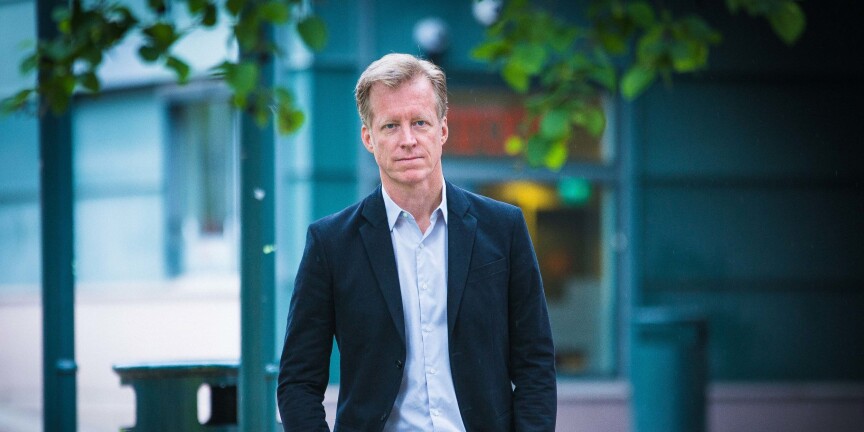
Rice: KD is undermining Plan S
Open Access. Curt Rice claims that the 2-level reward system for publication should be changed. Anything less leaves KD in conflict with itself.
OBS! Denne artikkelen er mer enn tre år gammel, og kan inneholde utdatert informasjon.
One criticism of Plan S is that there aren’t enough good open access journals to publish in. Traditional journals have spent years building strong reputations. The prestige researchers acquire when their work is published in these journals is massively reinforced by the career system we have built – in hiring decisions, grant awarding processes, performance reviews and so on. Open access journals are so new that they haven’t yet achieved the same level of visibility. Why should we be forced to sacrifice these benefits for a political agenda?
In Norway, we have an official registration system for research publications, a key element of which is the classification of journals as either Level 1 (intended to cover about 80% of publications by Norwegian researchers) or Level 2 (intended to cover the best 20%). Some critiques of Plan S claim that the government is speaking out of both sides of its mouth, since we have economic incentives to publish in Level 2 journals at the same time as we soon can publish only in Open Access journals, almost none of which are at Level 2.
The two-level distinction has always been troublesome because it tastes of corruption, it hints of unfair competitive advantages to the biggest publishers, and it introduces tensions among the ministry’s policies.
We can easily solve this contradiction by eliminating Level 2 and restricting Level 1 to open access journals. Beyond the important ambitions of Plan S, there are at least three more good reasons to merge the two levels. The combined force of these leads me to claim that our system will have greater legitimacy and higher quality if Level 1 and Level 2 are collapsed.
First of all, journals are assigned to Level 2 in part by a process involving those who will benefit from the classification. Researchers make recommendations to our National Board of Scholarly Publishing (Publiseringsutvalget) about which journals should be at Level 2. Everyone knows of odd results giving some relatively insignificant journal a spot on the limited Level 2 list. I personally have seen emails from those headed off to the meetings for determining Level 2 recommendations, soliciting input about which journals one is trying to publish in such that they can be recommended for Level 2. And while the National Board operates with indubitable integrity in their selections, it isn’t far from corruption when those who will benefit from a system are allowed to significantly influence the details of the system from which they will derive those benefits.
Secondly, only about 5% of the publishers represented at Level 1 are also represented at Level 2, which again is supposed to house about 20% of our production. Furthermore, the large, commercial publishers are substantially overrepresented at Level 2. Placing a journal into the Level 2 category gives its publisher a competitive advantage. The government pays us about three times as much for an article when it is published in a Level 2 journal as opposed to when it is published in a Level 1 journal. This is a substantial economic incentive that pushes researchers to favor submission to Level 2 journals thereby giving the large commercial publishers support as a prefered outlet from the government while rendering the smaller publishers less attractive. I hope that an eager law student or professor will assess this practice against the Norwegian fair play regulations, since the small publishers probably can’t afford to test such a claim in court.
Thirdly, the Norwegian Ministry of Education and Research explicitly encourages research institutions to commit themselves to The San Francisco Declaration on Research Assessment (DORA), which tells us that we should evaluate each other based on the quality of the research in the articles that we publish, not on the citation rates of other articles published in the same journal. In other words, researchers on the one hand are given an economic incentive to publish in Level 2 journals. On the other hand, they are encouraged in evaluation processes to ignore where an article has been published. This is not a coherent portfolio of policies.
The Norwegian system for rewarding publication has had a tremendous effect and is responsible for a positive development regarding the habits of Norwegian researchers. But the two-level distinction has always been troublesome because it tastes of corruption, it hints of unfair competitive advantages to the biggest publishers, and it introduces tensions among the ministry’s policies. The time has come to sanitize our system. Fortunately, that’s very easy. The government should eliminate Level 2. This change is necessary if the vision of full open access publication in Plan S is to have any hope of success in Norway.
Finally, having seen the effect of the economic incentives in our publishing system, the government surely can understand that full compliance with Plan S would most easily and effectively be achieved if inclusion on the Level 1 list were limited to open access journals. This is the only move that could yield a truly rational policy. Any result short of this leaves the Ministry as both an advocate and an opponent of Plan S.
Maybe this would give an even better approach for an abrupt transition to open access: Let researchers publish wherever they want but stimulate them with our registration and reward system to publish in open access journals. Because one thing is certain here: As long as the government continues to give researchers incentives to publish behind paywalls, they will.






Logg inn med en Google-konto, eller ved å opprette en Commento-konto gjennom å trykke på Login under. (Det kan være behov for å oppdatere siden når man logger inn første gang)
Vi modererer debatten i etterkant og alle innlegg må signeres med fullt navn. Se Khronos debattregler her. God debatt!